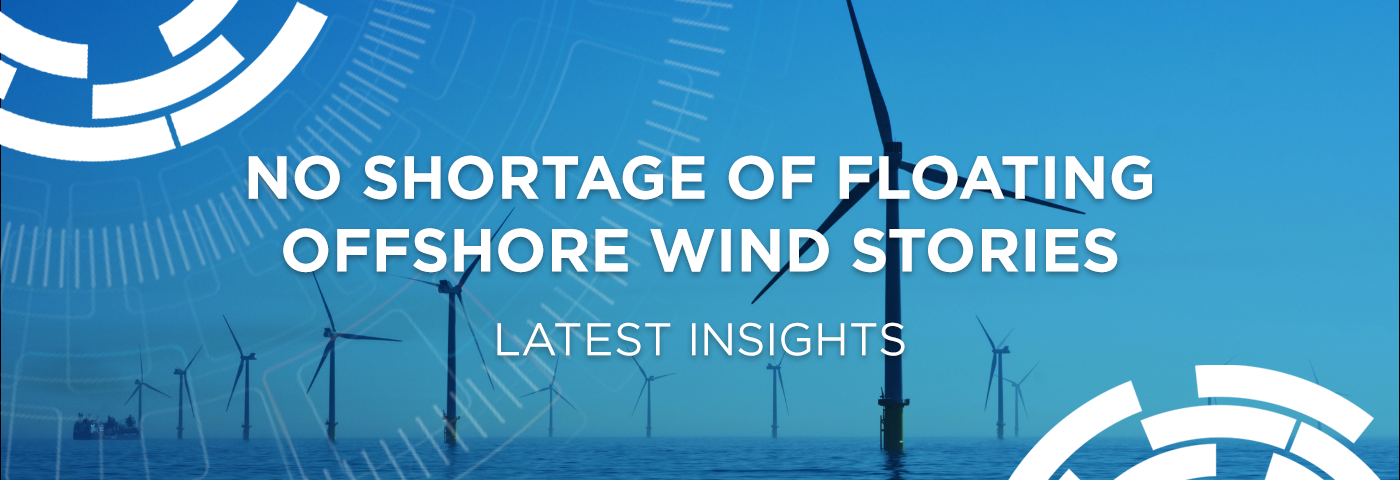Hearty congratulations!
Many congratulations to Orbital Marine Power whose O2, the world’s most powerful tidal turbine, has commenced grid connected power generation at the European Marine Energy Centre (EMEC) in Orkney. The innovative, floating turbine is anchored in the Fall of Warness where a subsea cable connects the 2MW offshore unit to the local onshore electricity network.
Manufactured and launched in Dundee earlier in the year before being towed up to Orkney, the O2 is Orbital’s first commercial turbine and represents the culmination of more than 15 years of world leading product development in the UK. The 74m long turbine is expected to operate in the waters off Orkney for the next 15 years with the capacity to meet the annual electricity demand of around 2,000 UK homes with clean, predictable power from the fast-flowing waters. In a further ground-breaking element of the project, the O2 is to provide power to EMEC’s onshore electrolyser to generate green hydrogen that will be used to demonstrate decarbonisation of wider energy requirements.
Not only has the technology proved itself, but Orbital (an All-Energy exhibitor and regular speaker) have certainly communicated every stage in the development, funding, manufacture, journey to Orkney and now installation magnificently.
There’s no shortage of floating offshore wind stories
No longer is floating offshore wind the ‘new kid on the block’ – the ScotWind licence round and Celtic Sea development have seen to that, quite apart from news from overseas. Do you, like us, get the feeling that a week without FOW news will seem quite strange now?
- The Carbon Trust has been appointed by the Department for Business, Energy, and Industrial Strategy (BEIS) to provide technical support to the Floating Offshore Wind (FOW) Demonstration Programme, to help accelerate the net zero transition, while bolstering the UK’s renewable energy generation.
The programme will target three key industry challenges: mooring/anchoring, dynamic cables and floaters/foundations, alongside a series of industry-led miscellaneous projects.
It is all part of the Net Zero Innovation Portfolio (NZIP), a £1 billion fund to support the development and adaptation of low carbon technologies and systems across industry, power and the built environment.
- New floating wind technology in the UK has taken an important step forward with the announcement that 300MW of new projects, identified through The Crown Estate’s Test and Demonstration leasing opportunity, have been given the green light to progress to the next stage of assessment.
The three projects (Whitecross, Llŷr 1 and Llŷr 2), each located in the Celtic Sea, have satisfied the initial application criteria set out by The Crown Estate, demonstrating technical competence, delivery capability and technological innovation.
The next stage will see the projects subject to plan-level Habitats Regulations Assessment (HRA) to assess possible impacts on protected marine habitats. Subject to the outcome of this assessment, the applicants could then be granted seabed agreements for lease.
- ORE Catapult’s Floating Offshore Wind Centre of Excellence (FOW CoE) has established a 2-year programme of work with a range of opportunities to support the programme in the coming months. All ORE Catapult procurement exercises are conducted through their procurement portal. To receive notifications regarding future tender opportunities, click here to register for an account free of charge. User guides are available on the portal. If you are already registered, please ensure your contact information is up to date.
- The TetraSpar floating wind foundation, developed by Stiesdal Offshore Technology, has arrived at the METCentre, near Stavanger, southeast Norway. The foundations have been fitted with a 3.6MW wind turbine.
The news was shared via social media by that great innovator Henrik Stiesdal and the offshore installation firm Bourbon Subsea Services. Bourbon was responsible for the transportation and installation of the 3.6 MW floating wind turbine prototype.
In his post Henrik pays tribute note only to his partners – Shell, RWE and TEPCO RP – and also Welcon (manufacturing), SGRE (wind turbine), DSM (supplier of Dyneema ropes), BMS (onshore operations), Bourbon (offshore operations), Blue Power Partners (project management), and the Port of Grenaa and METCentre. Cable installation is planned for late summer.
Onshore wind – taking the H2 route
SSE Renewables and Siemens Gamesa Renewable Energy have signed a Memorandum of Understanding (MoU) to explore the opportunity to produce and deliver green hydrogen through electrolysis using energy from two onshore windfarms in Scotland and Ireland.
The partnership aims to encompass the full green hydrogen value chain, including construction, supply chain management, customer offtake and storage, end user requirements, reliability and operation and maintenance.
The two companies will also aim to work with green hydrogen customers across a range of industries including transportation, major distilleries and gas network operators.
Heat and energy efficiency in the news
- In an article headed ‘Johnson’s green dream is already turning toxic: David Cameron once railed against ‘green crap’. Now this PM is finding that warning voters they will have to rip out their gas boilers is a hard sell’ in the Sunday Times, Political Editor, Tim Shipman, writes at length of the government’s challenges pre-COP26 (it’s behind a pay wall but a free trial is available).
He reports that the UK government’s hydrogen strategy will be published 3rd week of August; followed by a heat and building strategy outlining boiler strategy in September. “The third report will be the biggest, the comprehensive net-zero strategy, which will tie together all the other strands and outline how the UK reaches the goal.”
Under the heading ‘The Green Gamble’ an illustration looks at solutions from insulation of all types to air source heat pump solar panel to EVs to determine the average cost, the annual saving and the payback time.
- Gas distribution company SGN and UK renewable energy solutions provider (and All-Energy exhibitor) Vital Energi are combining to form a unique and pioneering private sector initiative to develop, own and operate low and zero-carbon heat networks.
The 50:50 joint venture will create an Energy Services Company (ESCO), representing the UK’s leaders in utility infrastructure and heat networks to provide affordable and low-carbon infrastructure to SGN’s existing land portfolio. This includes delivery of heat to developments planned by SGN’s property arm, SGN Place, and the local vicinities where there is a demand for low-carbon heat.
- In a follow up to the SGN and Vital Energi news, Energy Digital reports that It is estimated that the heat network market requires approximately £30 billion of investment by 2050 to meet the UK Government’s net zero targets. The decarbonisation of heat has been highlighted as a particular challenge.
It cites the Clime Change Committee’s Sixth Carbon Budget requirement; the IEA estimate that globally around half of all energy consumption is used for providing heat, mainly for homes and industry; and looks at the Energy & Climate Intelligence Unit options for decarbonising heat.
Now for energy efficiency:
- In the 12 months to June 2021, 251,000 EPCs were lodged for new build homes, an increase of 16% on the previous year, meaning 85% of new homes in England & Wales are in the A or B energy efficient bands However, just 2% of the new homes delivered in England and Wales in the second quarter of 2021 were built to the highest energy efficiency standard (EPC A), official figures reveal
- Only 5% of private rental households in England have received government help with funding energy efficiency measures. The National Residential Landlords Association (NRLA) highlights that this is despite them having the greatest need.
Although more of those classed as fuel poor live in the sector, private rental households received only half of the help given to those in the social sector.
According to the English Housing Survey, a third of private rental sector housing was built before 1919. The NRLA says this is the hardest to treat and accounts for a larger proportion of the sector than for any other housing tenure. Across England’s entire housing stock, 84% of properties built before 1919 had an energy rating or D or worse.
Now’s the time to get nominating for the Scottish Green Energy Awards
There are a dozen awards for which you can make nominations – all submissions need to be made by Monday 13 September; with the celebrations are due to take place on the evening of 2 December at the EICC in Edinburgh. Take time to browse the list of awards and think who you could make feel special by nominating them. We know from our Project Director, Judith Patten just how very special it was to be presented with the SGEA Outstanding Contribution Award way back in 2012 – she still keeps it polished!

